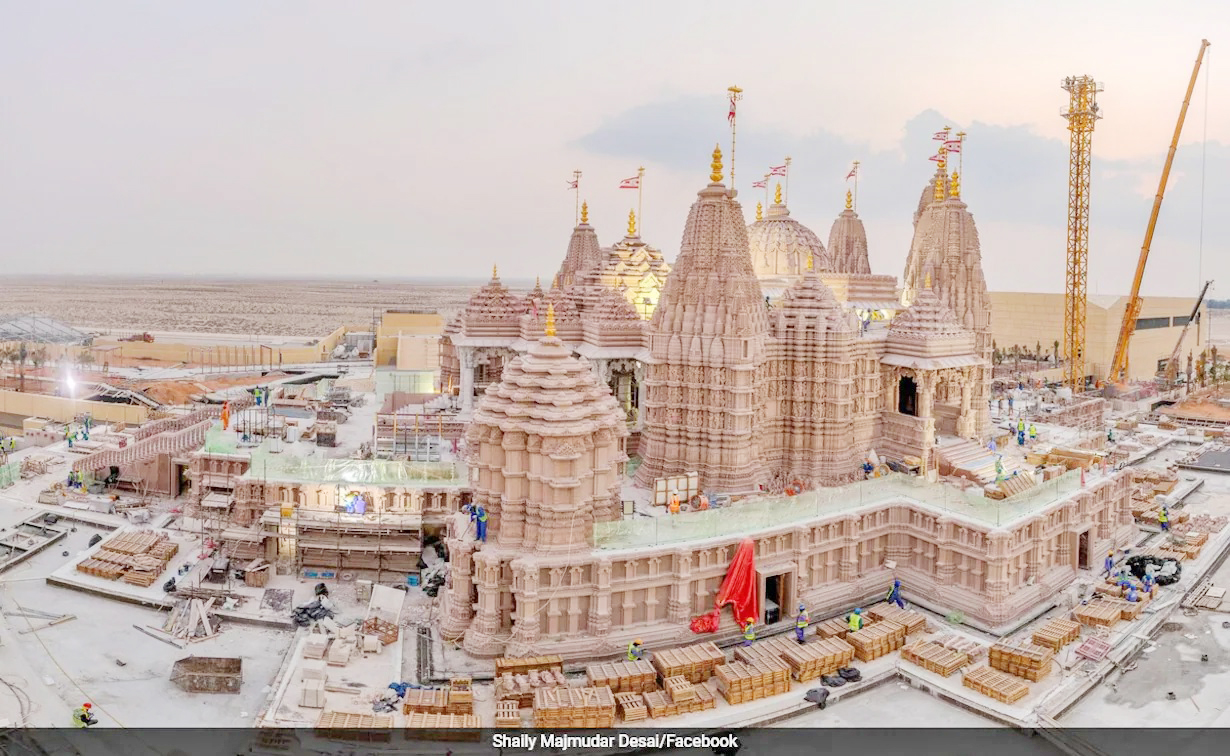In a historic development, the first Hindu temple in the capital of the United Arab Emirates, Abu Dhabi, is set to be inaugurated on February 14th. Skilled artisans from the villages of Makrana, Rajasthan, have been actively involved in crafting intricate marble pieces for the temple over the past four years, contributing to the creation of pillars and statues depicting Hindu deities like Lord Ram and Lord Ganesha.
Despite the challenges posed by the Covid-19 pandemic, the artisans remained dedicated to their creative journey, and the result is a grand temple being constructed by BAPS Swaminarayan Sanstha on a 27-acre site in Abu Mureekha near Al Rahba on the Dubai-Abu Dhabi Sheikh Zayed Highway.
The façade of the temple showcases exquisite marble carvings on a sandstone background, utilizing over 25,000 stone pieces carved by skilled artisans from Rajasthan and Gujarat. The construction also involved importing a significant quantity of pink sandstone from northern Rajasthan to Abu Dhabi.
The temple’s architectural elements include two domes (ghumats) and seven shikharas, symbolizing the seven emirates of the United Arab Emirates. Each shikhara features carvings depicting scenes from the Ramayana, Shiva Purana, Bhagavatam, and Mahabharata, along with representations of deities such as Lord Jagannath, Lord Swaminarayan, Lord Venkateswara, and Lord Ayyappa.
Artisan Som Singh highlighted the practical considerations for the climate of the UAE, stating that the selected stones are known to withstand temperatures up to fifty degrees Celsius. Italian marble has been incorporated into the construction to ensure grandeur.
Balram Tonk, a fifth-generation artisan, expressed pride in creating intricate carvings that narrate stories from sacred texts. Tonk, along with his brothers, also contributed to the construction of the new Ram temple in Ayodhya. The artisans’ work is considered a testament to the message of brotherhood and communal harmony.
The inauguration of the temple holds great significance, with Prime Minister Narendra Modi scheduled to attend the program. The temple officials shared insights into the construction process, highlighting the use of heat-resistant nano tiles and heavy glass panels.

















